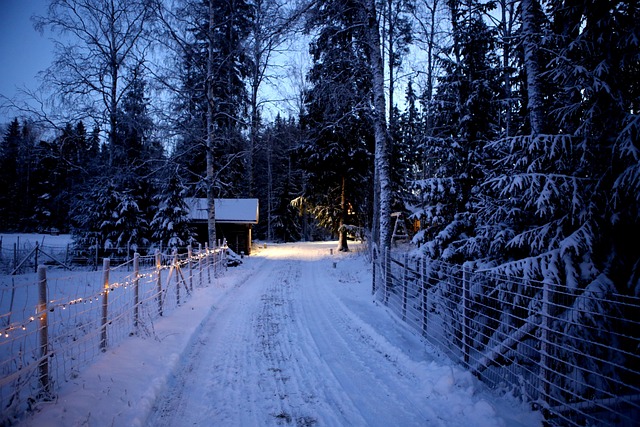New Bedford, Massachusetts, boasts a rich architectural heritage that extends to its ornamental fencing styles. This article explores the evolution of fencing in the region, from historical perspectives to contemporary trends. We delve into popular ornamental designs, the interplay between traditional and modern influences, local material choices, and their cultural significance. Additionally, practical installation tips ensure long-lasting fences that enhance community engagement and property aesthetics.
- Historical Overview of Fencing in New Bedford
- Popular Ornamental Styles in the Region
- Traditional vs Modern Design Influences
- Local Material Choices and Their Impact
- Cultural Significance and Community Engagement
- Installation Tips for Long-Lasting Fences
Historical Overview of Fencing in New Bedford
New Bedford, MA, like many American cities, has witnessed the evolution of fencing styles throughout its history. Initially, fences served primarily functional purposes, protecting properties and defining boundaries. During the 19th century, as the city industrialized and grew, so did the complexity and aesthetic considerations of fencing. This period saw the introduction of various ornamental fencing styles influenced by European architecture and design trends.
The maritime heritage of New Bedford also played a role in shaping its fencing landscape. The city’s bustling harbor and shipyards inspired the use of robust yet visually appealing fences to protect and mark naval properties. Over time, these functional elements incorporated decorative elements such as intricate latticework, intricate iron railings, and elaborate sculptures, transforming ordinary fences into artistic statements that reflect the city’s rich history and diverse cultural influences.
Popular Ornamental Styles in the Region
New Bedford, MA, is known for its diverse architectural styles, and ornamental fencing plays a significant role in enhancing the curb appeal of many homes in the region. Among the popular choices are traditional styles like Victorian and Colonial, which often feature intricate designs with detailed ironwork. These elegant fences showcase elaborate patterns, including spirals, curves, and intricate latticework, adding a touch of historical charm to residential properties.
Another prevalent trend is the use of natural materials such as wood and stone in ornamental fencing. Local artisans craft beautiful wooden fences with unique carvings and custom designs. Stone fences, often stacked with precision, create a robust and timeless look. These styles seamlessly blend with the natural surroundings, offering both aesthetic appeal and durability, making them popular choices for homeowners seeking a more organic approach to outdoor space definition.
Traditional vs Modern Design Influences
In New Bedford, MA, the ornamental fencing landscape reflects a fascinating interplay between traditional and modern design influences. Historically, the city’s architecture leans heavily on classic styles, characterized by intricate carvings, elegant curves, and time-tested materials like wood and iron. These traditional elements are evident in many local homes and structures, creating a sense of nostalgia and continuity. However, contemporary trends have also made their mark, introducing modern twists such as sleek metal panels, minimalist designs, and innovative use of glass and composite materials. This fusion of old and new enriches the urban fabric, offering residents and visitors alike a diverse range of aesthetic options to suit individual preferences.
Local Material Choices and Their Impact
In New Bedford, the choice of materials for ornamental fencing reflects both the local climate and the region’s rich cultural heritage. Wood, a popular and traditional option, is abundant in this area and offers a natural aesthetic that complements many residential styles. Local wood fence manufacturers often specialize in unique designs, incorporating elements like intricate carvings or historic patterns that pay homage to New Bedford’s maritime past.
Stone, another prevalent material, draws from the region’s geological features. The rugged coastline and nearby quarries provide easy access to diverse stone varieties, allowing for robust, low-maintenance fences. Local stonemasons can craft elegant, enduring stone walls that not only serve as boundaries but also add texture and visual interest to outdoor spaces, harmonizing with New Bedford’s picturesque landscapes.
Cultural Significance and Community Engagement
In New Bedford, MA, ornamental fencing styles are more than just aesthetic additions to properties; they reflect the cultural richness and historical narrative of the community. Each unique design tells a story, honoring traditions and heritage that have shaped the city’s identity. From intricate ironwork reminiscent of European influences to modern interpretations incorporating indigenous motifs, these fences serve as visual markers of New Bedford’s diverse cultural tapestry.
Community engagement plays a vital role in preserving and promoting these ornamental fencing styles. Local artisans and metalworkers contribute their skills, ensuring that traditional techniques are passed down through generations. Neighborhood associations and city initiatives also play a part by highlighting and celebrating the artistic value of these fences, fostering a sense of pride among residents. This collective effort not only preserves cultural heritage but also strengthens the bond within the community, making ornamental fencing a vibrant symbol of New Bedford’s unique character.
Installation Tips for Long-Lasting Fences
When installing ornamental fences in New Bedford, MA, proper preparation and techniques are key to ensuring longevity. Start by assessing your property’s topography and soil conditions to choose suitable fence posts that can anchor securely. Dig holes for the posts deep enough to provide stability against shifting ground. Use high-quality concrete to set the posts, allowing it to cure completely before attaching the fence panels. Regular cleaning and sealing of wooden fences will protect them from decay and insects. Additionally, inspecting your fence regularly for signs of damage or wear and replacing damaged sections promptly can extend its lifespan significantly.
